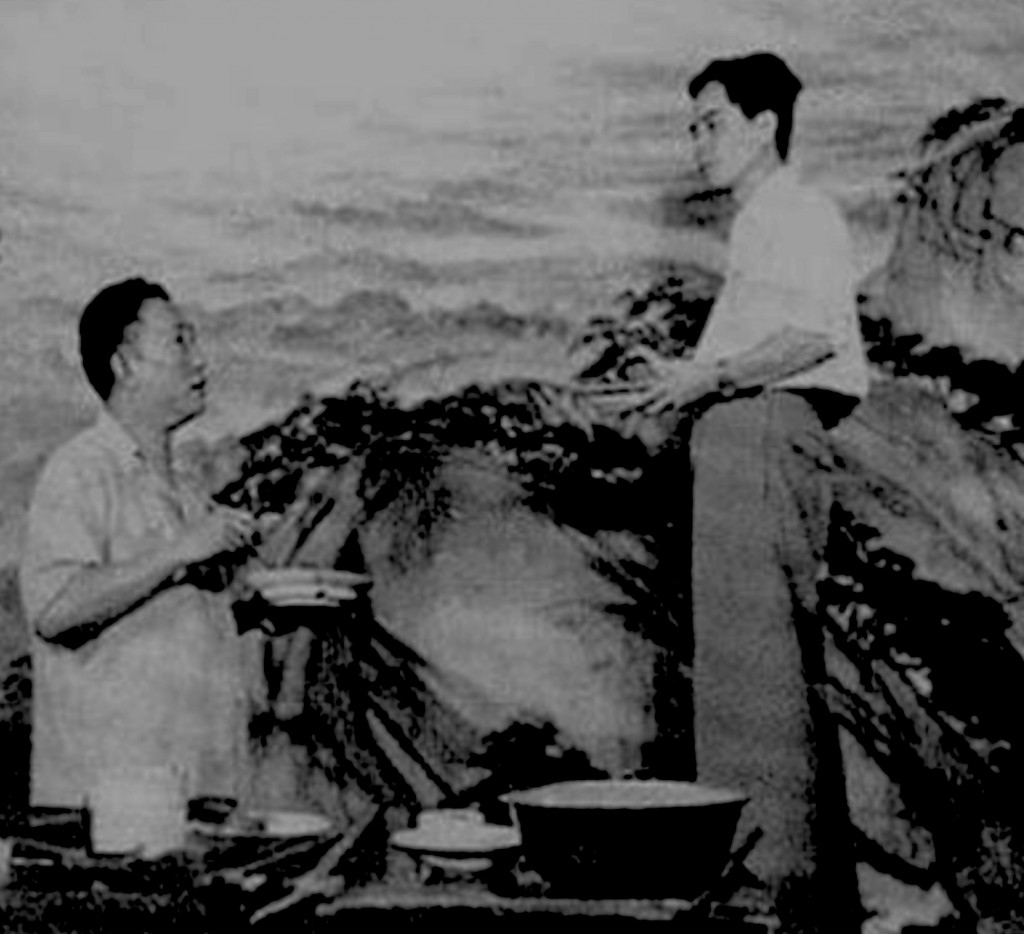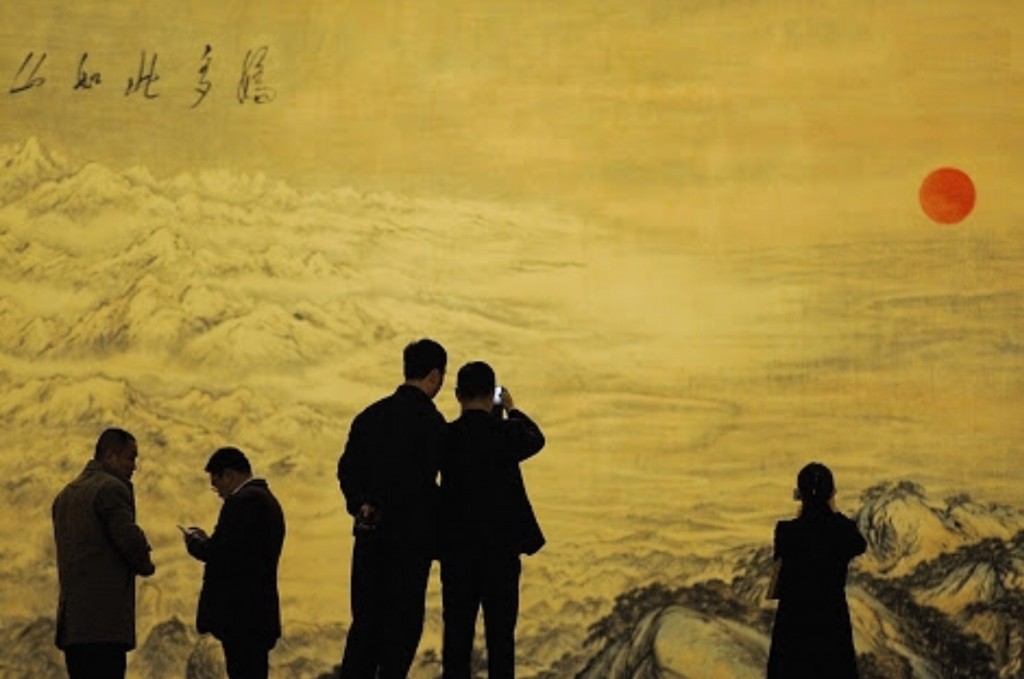
In the late 1920s and early 1930s, a number of noted upcoming artists — their number included Lü Fengzi 吕鳳子, Xu Beihong 徐悲鸿, Zhang Daqian 張大千, Yan Wenliang 颜文梁, Lü Sibai 吕斯百, Chen Zhifo 陳之佛, Gao Jianfu 高劍父, Pan Yuliang 潘玉良 and Pang Xunqin 龐薰琹 — worked in the new national capital Nanking and were later identified as a kind of ‘ Jinling Artistic group’ 新金陵畫派, although they shared little in common. In the 1960s, the Nanking-based artists Fu Baoshi 傅抱石, Qian Songyan 錢松喦 (d.1985), Ya Ming 亞明 (d.2002), Song Wenzhi 宋文治 (d.1999) and Wei Zixi 魏紫熙 (d.2002) would also be associated with Jinling; they were collectively also dubbed the ‘New Jinling School of Fine Arts’ who were known for various developments in ink painting brushwork and composition. They were also in the tradition of modernising ‘national artists’ 國畫畫家 who brought contemporary elements into their work, in particular the quotidian and heavy industrial during the Mao years. The painting of this amorphous group was celebrated for its romantised revolutionary themes, upbeat style and frequent garish, even kitsch, colours, all said to be a recalibration of Lower Yangtze Valley and Nanking-centric artistic sensibility.
One of the most prominent of this group, Fu Baoshi (傅抱石, 1904-1965), had settled in Nanking in 1946 and was quick to adjust to the new Communist-led regime after 1949, painting among other things works inspired by Party chairman Mao Zedong’s poems. Fu was a founder of the Jiangsu Art Academy and a prominent politico-cultural figure in the 1950s, so much so that he was invited to create with Guan Shanyue (關山月, 1912-2000) a key art work for the Great Hall of the People, one of the Ten Great Edifices built to celebrate the first decade of the People’s Republic and to mark the high tide of the Great Leap Forward.
Fu and Guan worked on the picture from May to September 1959 as part of the ‘Major National Day Celebrations’ 國慶大慶 that year (for more on this and other National Day celebrations, see here). To respond to the various political requirements of the party leaders and cultural figures who, among other things, wanted the rising sun representing the effulgence of Mao himself to loom prominently over a landscape that combined the lush features of the south with the snow-bound vastness of the north of China. The resulting seven metre by five metre work, ‘This Land so Rich in Beauty’ 江山如此多嬌 (also translated as ‘Such is the Beauty of Our Rivers and Mountains’), took its inspiration in a line from Mao Zedong’s most famous poem ‘Snow’ 雪 which was said to have been written in 1936 at the end of the Long March. When the poem was published in China’s wartime capital Chongqing it ignited speculation that in it Mao had given voice to his desire to be a new emperor. Later official exegesis denied that the last words of the poem — ‘For truly great men/ Look to this age alone’ 數風流人物,還看今朝 — referred to anything other than ‘the labouring masses’.
Fu Baoshi remained a leading artist, theorist and cultural bureaucrat in Nanking until his (timely) death in 1965.
On the painting: http://www.soocang.com/content-37-37726-1.html

Snow — to the tune of Chin Yuan Chun
North country scene:
A hundred leagues locked in ice,
A thousand leagues of whirling snow.
Both sides of the Great Wall
One single white immensity.
The Yellow River’s swift current
Is stilled from end to end.
The mountains dance like silver snakes
And the highlands charge like wax-hued elephants,
Vying with heaven in stature.
On a fine day, the land,
Clad in white, adorned in red,
Grows more enchanting.
This land so rich in beauty
Has made countless heroes bow in homage.
But alas! Chin Shih-huang and Han Wu-ti
Were lacking in literary grace,
And Tang Tai-tsung and Sung Tai-tsu
Had little poetry in their souls;
And Genghis Khan,
Proud Son of Heaven for a day,
Knew only shooting eagles, bow outstretched
All are past and gone!
For truly great men
Look to this age alone.
沁園春·雪
北國風光,千里冰封,萬里雪飄。
望長城內外,惟余莽莽;
大河上下,頓失滔滔。
山舞銀蛇,原馳蠟象,欲與天公試比高。
須晴日,看紅裝素裹,分外妖嬈。
江山如此多嬌,引無數英雄競折腰。
惜秦皇漢武,略輸文採;
唐宗宋祖,稍遜風騷。
一代天驕,成吉思汗,只識彎弓射大雕。
俱往矣,數風流人物,還看今朝。


